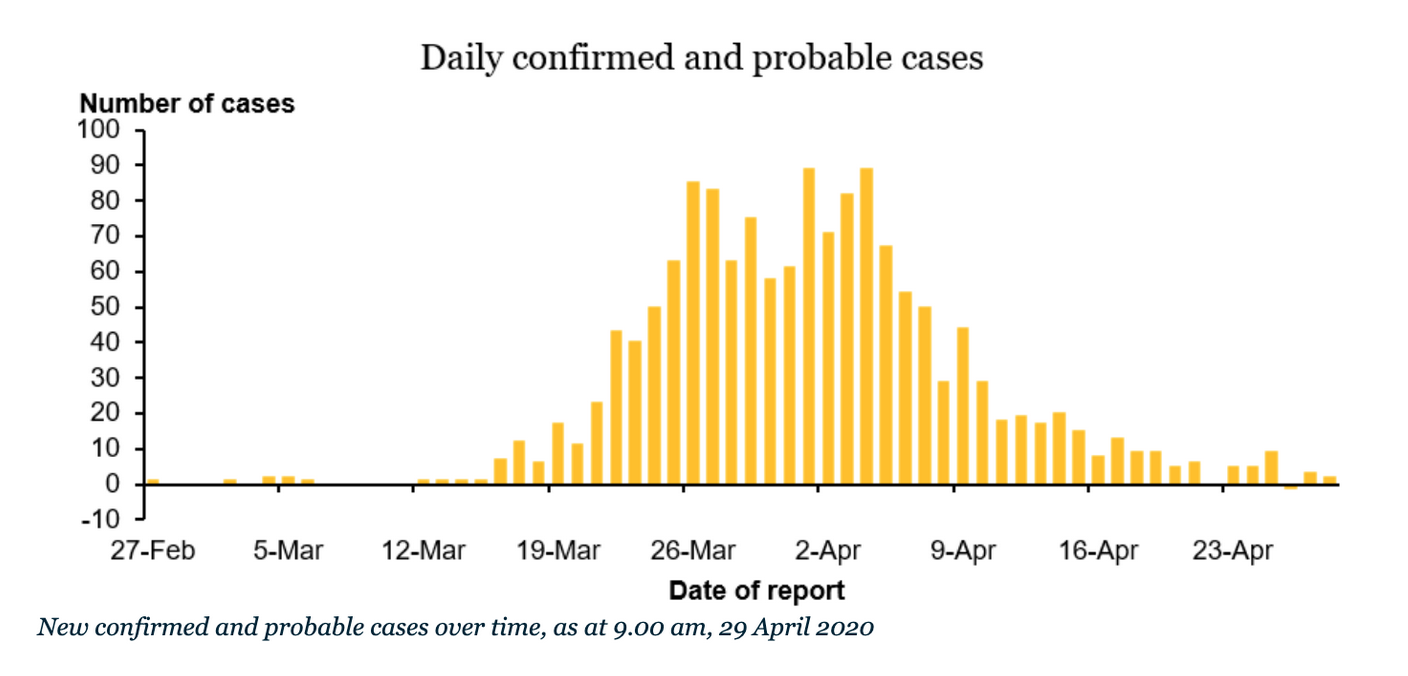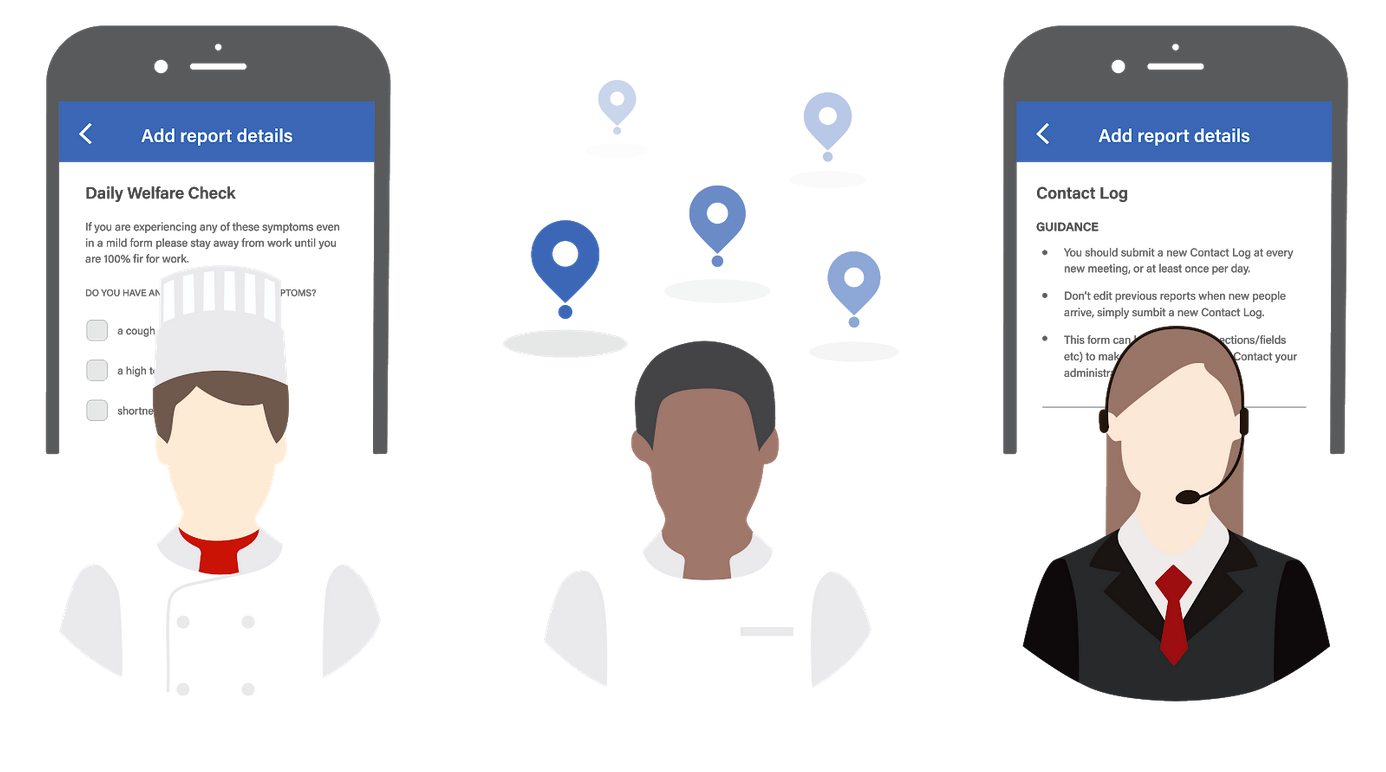
The release of new public contact tracing apps by government authorities around the world, has left uncertainty for business leaders.
Organizations want to know what they need to do as they resume operations in the new COVID-19 environment, but there is little guidance about how public contact tracing apps are used by businesses.
So, let’s try and explain this new landscape, and the role businesses are likely to play in the eradication of COVID-19. There are a few emerging trends that seem somewhat inevitable, for those like ourselves that build & deploy contact tracing apps.
First of all however, let’s consider businesses in the public health context of containing COVID-19 outbreaks.
Countries need to reopen their economies long before the threat of COVID-19 is completely gone. We all know that. This means our workplaces are going to reopen while the virus is in the community. Events and large gatherings of people are banned or restricted in most jurisdictions, but workplaces remain a major vulnerability in containing the spread of the virus, due to the large-scale interaction of people in confined spaces - they can lead to a quick acceleration in outbreaks.

We need only to look to statistics from New Zealand - one of the most successful countries at containing the virus thus far - to see that half of their major “clusters” of cases have occurred in workplaces. (In fact all but four of their major clusters have been related to workplaces or events.)
So each business has a fundamental responsibility to ensure they manage this risk for the good of public health. Failure to do so can have dire consequences for the wider community.
If we now look through a health and safety lens, businesses also have a responsibility to keep their employees and contractors safe and well; a ‘duty of care’ you may call it.
This duty of care is particularly acute right now and brings workplaces one might normally consider ‘low risk’ from a health and safety standpoint, into very much a high-risk category, or at least in line with everyone else. Business leaders - those with the ultimate legal responsibility for their staff’s wellbeing - will need to consider the ramifications of a positive COVID-19 case within their team and especially if that case was slowly or poorly handled.
As British legal experts pointed out in a recent edition of Business Leader magazine COVID-19 is the same as any other hazard to your employees’ health and you must act to protect them. Importantly, in many countries this also includes contractors and even the public.
The importance of being safe to trade with over this period in order to maintain supplier, partner and customer relationships is also a key consideration. Demonstrating a thorough approach to contact tracing, personal protective equipment, social distancing and hygiene will enable organisations to provide assurance to their partners while reducing the risk of a poorly managed COVID-19 outbreak that could seriously harm these relationships and their reputation (in addition to impacting their own operations).
Having established why businesses have an important role to play with contact tracing, it raises the obvious question of what specifically can businesses do?
In short; the basic requirement is that you need to be reliably collecting contact lists for each person; and you need to be able to call on the previous 14 days of those lists for people that become infected or might have been in touch with an infected case to enable quick and effective contact tracing and isolation. It’s about collecting the data reliably, doing it efficiently and being able to call upon it quickly and in a logical and user-friendly manner when needed. Please note when I say ‘requirements’ I’m not referencing a government-issued requirement; I mean the requirements if you want to effectively help your organisation and health authorities to contact trace people when a positive case is identified.
Our position is that:
- Businesses need to have an automated contact tracing solution to effectively manage this process internally;
- Business needs are not solved by public contact tracing apps released by national or regional authorities.
There are several really important reasons for this.
Firstly, a business-focused solution offers businesses the chance to react with much greater speed and reliability than a public app. Let’s break down why:
As an employer you can’t “rollout” or manage usage of a public contact tracing app within your business. There is no insight into who is actually using it or not. On the contrary, contact tracing apps such as SaferMe allow you to quickly onboard your staff and see who has actually downloaded the app or not.
Regarding speed, there is a significant difference between business vs public apps that is critical in the context of COVID-19 spread. With a business solution, management can prompt daily “fit-for-work” reporting (a form that takes two seconds for employees to complete) and can flag a case at the moment symptoms occur. That enables management to take action swiftly - isolating a symptomatic person before a positive test and pulling up their contact table (which the solution automatically generates) to have those people work from home too. Contrast that with a public app, that requires a positive test to be returned, and then it relies on the user to report that test result, and even then, you don’t have that data internally to manage.
The difference in reaction time is at least 2-3 days even in a best-case scenario. That is a long time for a COVID-infected person to be spreading the virus internally without awareness for those around them.
Further weaknesses of the public contact tracing apps were detailed nicely in this lengthy, but well-referenced article by Silicon Valley business leader Tomas Pueyo. In short, he shows opt-in public apps are not going to make a significant difference. Aside from technical limitations, the ability to get enough people to adopt them severely restricts their effectiveness.
Another tactic businesses are trying is use of QR codes or similar visitor management systems to register visitors or members of the public coming to their place of work. We believe there is a need for registration systems to capture public attendance, provided it is efficiently presented to ensure high usage and involves no cross-contact between multiple people. These technologies alone don’t capture the full needs for business, but they are an important component for organisations that interface with the public.

Overall, an automated mobile contact tracing solution is the best option for businesses to take their role in contact tracing seriously, to maximise ability to respond to a case; and to do all of this efficiently. It can be easily expanded across all staff, contractors and even subcontractors or partners.
Businesses require three core components - daily fit for work check ins; automated background contact tracing; and manual contact tracing. As well as a web administration for management where a contact list can be produced for positive or suspected COVID-19 cases. You can read more about this here.
For some very small businesses (eg 1-10 employees) with low external interactions, a paper and pen approach may work; combined with data from HR/payroll systems.
But it should be noted that a ‘pen and paper’ approach has significant shortcomings, especially for larger organisations. Relying purely on memory and depending on workers to consistently record the names, and collate and store these notes over two weeks is just the beginning. The time this takes in large organisations will soon become unmanageable; while in the event of an actual case in your organisation, contact tracing is a significant challenge with paper notes. To put it mildly.
This is because it isn’t just the direct contacts of an infected person that you need to be able to connect to - it’s the contacts of those contacts - the “2nd and 3rd degree” contacts that you also need to calculate and connect with swiftly. This is something that SaferMe does automatically for you in the background.
I hope this has been a useful summary of why business has an important role in managing COVID-19 with contact tracing and what your business needs to do. If you’d like more information about how you can achieve that with the SaferMe solution, visit us at www.safer.me
Subscribe below to get future posts from SaferMe
We send out emails once a month. We won't share your email with anyone.